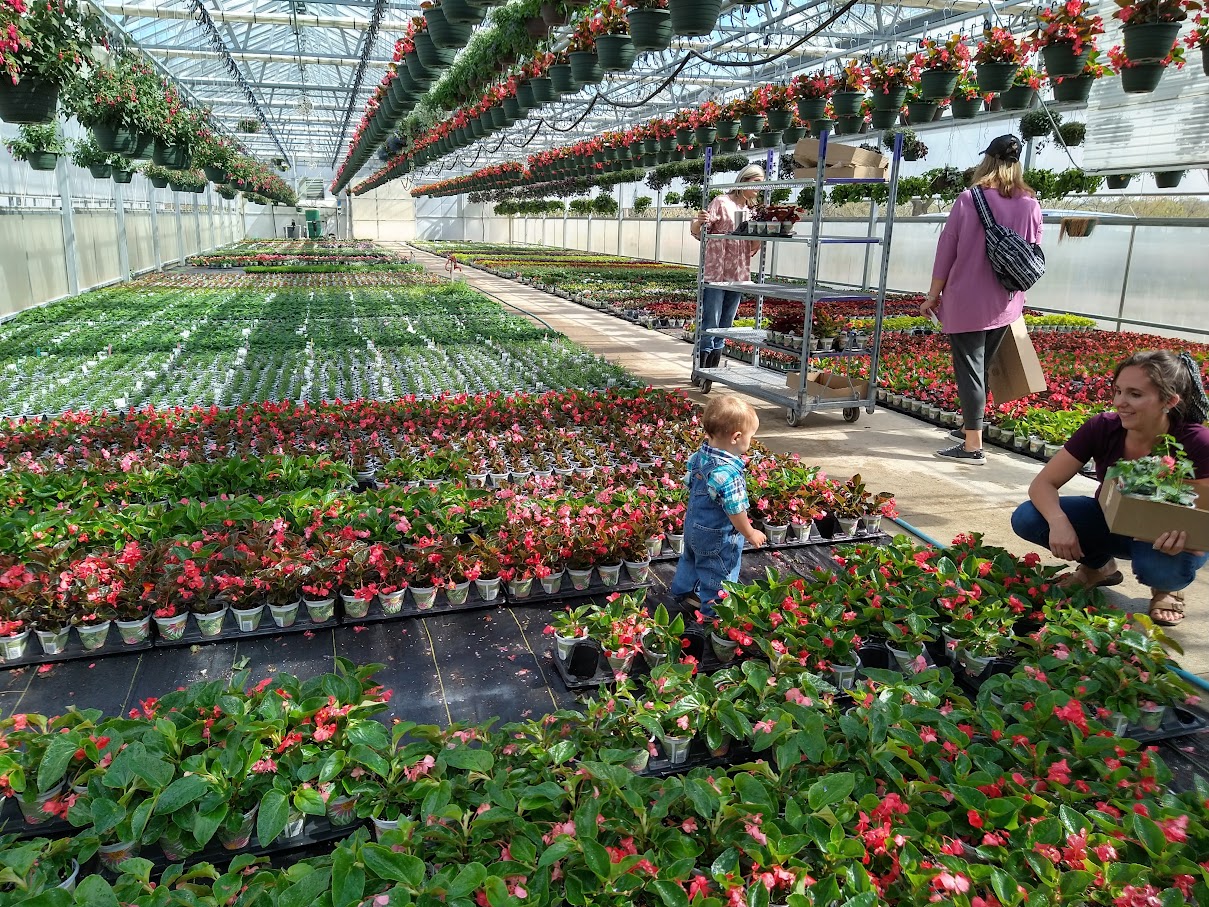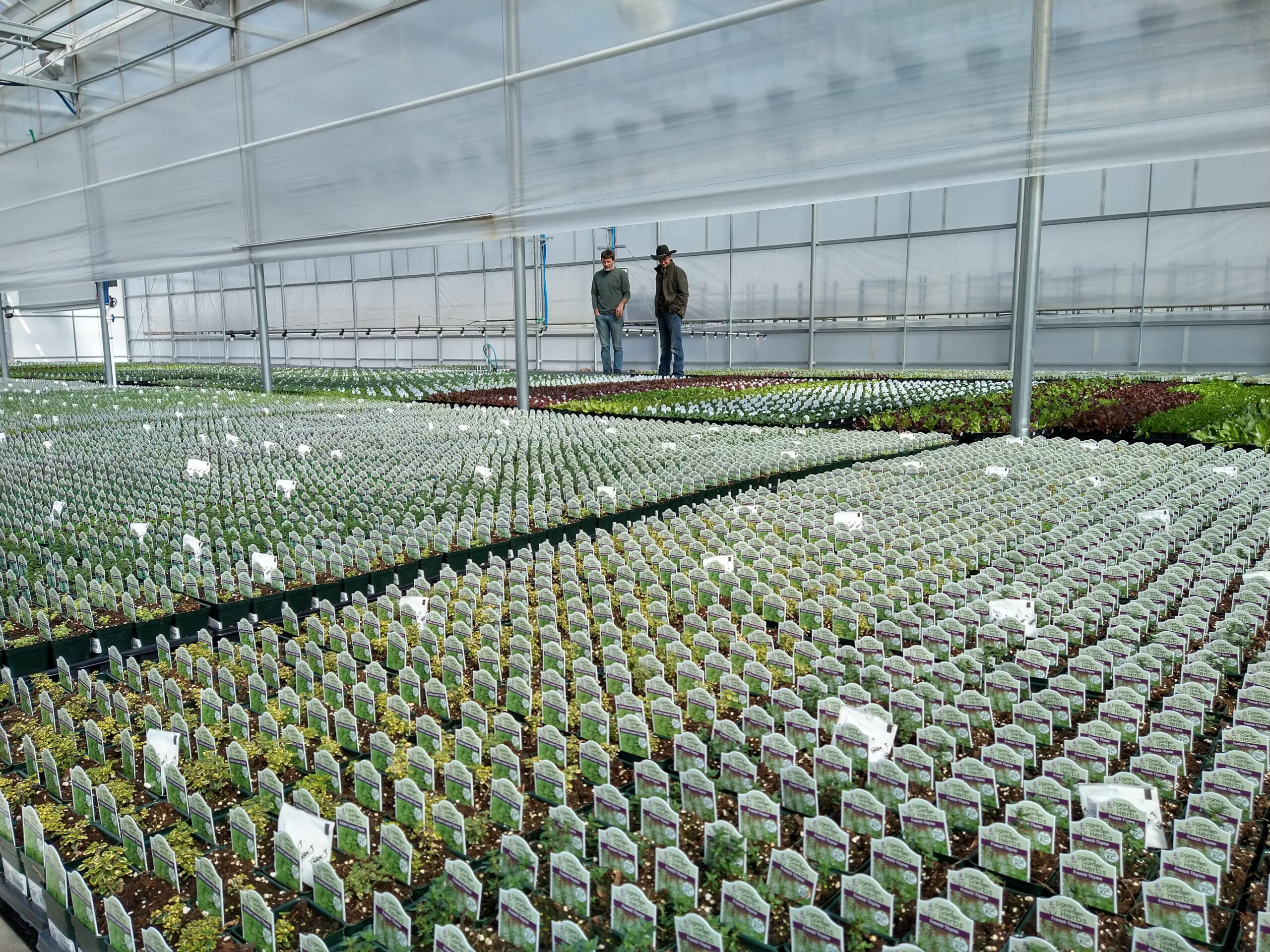Our Growing Process
Our Growing Process
Sullivan’s Greenhouse is dedicated to healthy, sustainable, and organic growing practices when it comes to our plants. We’re constantly looking for ways to improve our methods and positively impact the people and places we interact with. We also grow a wide variety of ornamental plants that utilize many of the same organic inputs, as well as some conventional inputs.


Organic Soil Health

Pest control is an important aspect of growing healthy crops. It’s important to us that we maintain a healthy environment in our greenhouses – not just for the plants, but for people too. Harmful chemical residues are not something we want to worry about before eating any of our plants.
Our family, like many thoughtful consumers, is always choosing to eat the most healthful foods available. Food with poisonous pesticide residue should never make it into the kitchen. We’ve spent a lot of time researching the most effective pest control methods that don’t compromise our commitment to producing a safe, healthy plant that can be eaten right out of the greenhouse.
One of the most interesting and rewarding pest control strategies we use is the banker plant system. A banker plant is a plant that is utilized to maintain a population of beneficial insects, or an insect “bank”. We do this by planting cereal grains such as wheat, rye or barley into pots (pictured below) and then infesting those plants with a cereal grain aphid.
These aphids are not interested in other plants, so they stay put on the banker plants. Once we have a healthy population of these established, we then release several species of parasitic wasps (Aphidius sp.). These are tiny wasps that can’t sting people, but they do sting aphids. When they sting the aphid – and the sting is deadly – they also deposit an egg inside the aphid body. This egg hatches a few days later and the larvae feeds on the aphid... inside out!
An aphid that has been stung turns into what we call “mummies” – kind of bloated and tan or black colored. It doesn’t take long for the banker plants to get loaded up with mummies. Now we have a good reservoir or “bank” population of beneficial insects on the banker plants. We place the banker plants in strategic locations all over the greenhouses.
We’ll find mummies wherever we’ve had an aphid infestation. The wasps can be really thorough and efficient. Here’s a Ruellia plant (pictured at right) that had some aphids hiding under a leaf in one of our houses. They’re all mummies now.
After a couple of weeks the wasp larvae has pupated and an adult wasp emerges from the aphid mummy to start the process all over again. In recent years, we’ve noticed these wasps have become naturalized outside the greenhouse giving us a returning population every season.
We’re also utilizing predatory mites in the greenhouse. We regularly release several species mites to combat thrips, fungus gnats, and plant eating mites. These mites prowl around our plants and in the soil hunting down harmful pests. You may see some of these pouches (pictured at right) or “ sachets” as we call them on some of our plants.
In each of these sachets is a small amount of bran that has been infested with a bran eating mite. Also in the sachet is a predatory mite. The bran mites serve as an alternate food source for the predatory mite during times when there aren’t any pests on the plants for them to feed on.
The predatory mites can freely come and go as they please and they will even breed inside the sachet. This system provides us with constant, slow release protection from harmful plant pests.
Having insect predators and parasites in the greenhouse is a huge asset and it’s one that we want to protect. Because of this, we must be extremely careful with other pest control measures to keep from harming these “beneficials”. This limits us to a handful of products that can be used as sprays. These are fungal and other biological products that have minimal effects on the beneficials and are safe for humans, birds and animals.
At times within our non-organic houses where we grow only ornamental plants, we’ll resort to a chemical pesticide if a serious outbreak occurs. These are applied in a limited and targeted fashion. Otherwise, we use the same organic control measures in our non-organic houses that we use in the organic houses. We never use any neonicotinoids.
